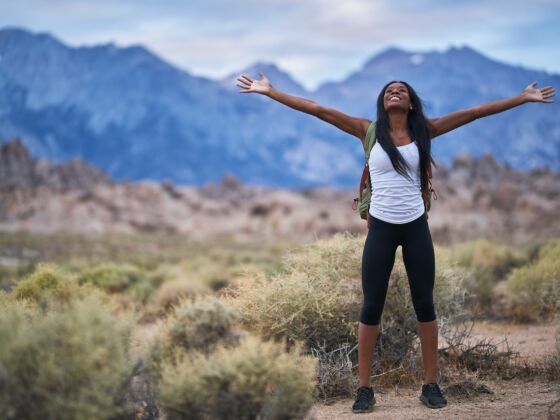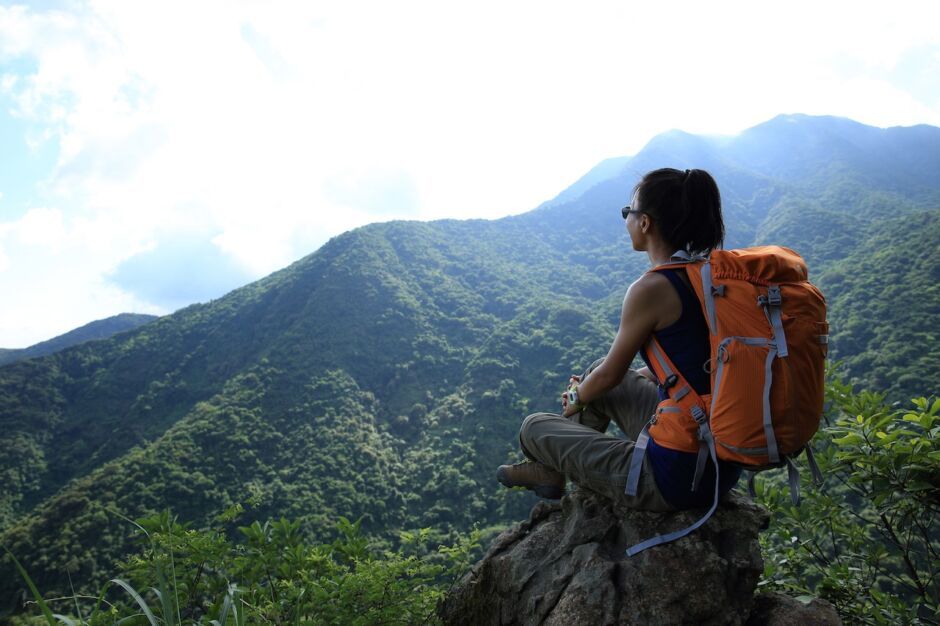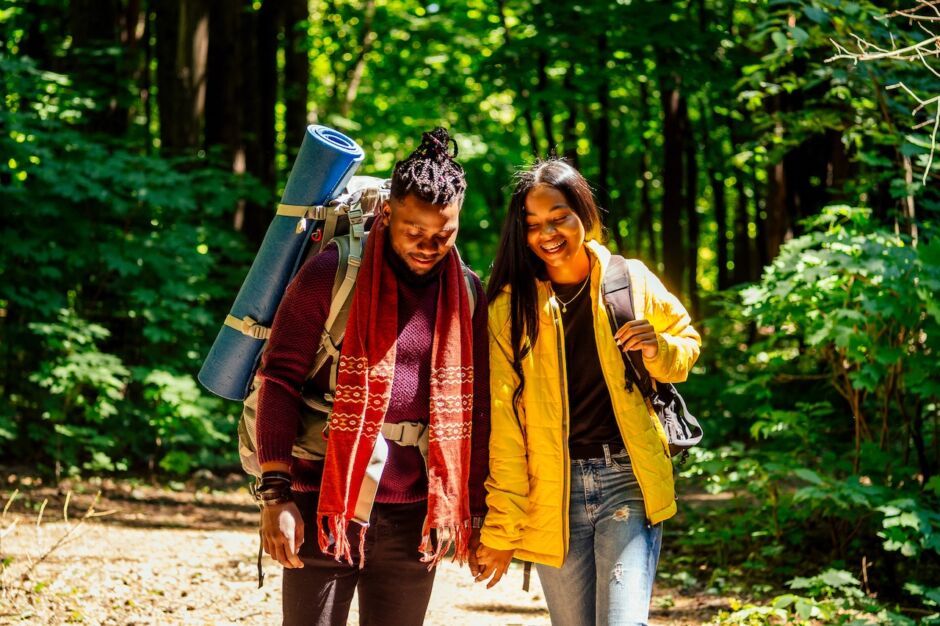Venturing Outdoors certainly is not a novel phenomenon for Black women, and yet I still find many women who look like me and come from similar places as me scouring YouTube channels and internet threads for guidance on where to begin. My family and I are frequent adventurers and moved from Connecticut to North Carolina in 2013. Despite having visited often, it wasn’t until relocating that I realized how diverse the state’s outdoor scenery is, from Blowing Rock’s beautiful mountains to Pine Knoll Shores’ sandy beaches and breathtaking sunsets. Exploring these areas helped me grow from a beginner hiker into an experienced and passionate outdoor adventurer. Here’s how you can begin exploring the world outside.


To the Black Women Who Want to Venture Outdoors — Here’s How I Got Started
I talked to locals about spots to explore
One of the best outdoor adventures that I’ve ever had was in Ghana — and it came from a conversation with a Ghanaian person who knew all about the must-see mountains and waterfalls. Several Black Americans like myself were studying abroad at the University of Ghana for four months, and we spent more time outdoors than on campus. Unfortunately, exploring a new country for the first time can be both time-consuming and costly, but I’ve found that speaking with locals is the best way to find out how to make experiences as affordable as possible. This also helps to ensure you know what you’re getting into, what to expect, and what to bring when embarking on an outdoor adventure.
For example, Adom Waterfalls (a little-known outdoor spot in Aburi) was only one hour from where my friends and I lived on-campus. Without inquiring about where to go, we likely would never have found this place. And even if we had, it would have been a guessing game to figure out how to get there. Online information was iffy in terms of cost, directions, and whether the area was even accessible to the public. But as we learned through word of mouth, apart from paying a guide (or local friend) to reach the waterfalls by foot, the only other expense is paying for an Uber, Bolt, or taxi ride to get there.

Photo: Izf/Shutterstock
I learned to make the most of where I was going
You can still see the world, even if you’re not able to hop on an international flight. A state like North Carolina will appeal to women who like beaches, camping, cycling, and pretty much anything that takes place in the great outdoors. A practical tip is to explore nearby places when you’re just getting started as a Black woman in the outdoors, at least at first. Learn as much as possible about the area before you arrive, including entrance prices where necessary. This is the best way to have more fun and maximize your time and experience. Also, take a moment to identify when is the best time to visit depending on snowfall, weather, heat, etc.
For example, hiking at the stunning Crowders Mountain State Park (which has free entry), is best in the early morning or afternoon, in part because it’s easier to park before beginning the walk to the actual trail. And you may find that the most popular activity at any given place isn’t the only one. Where permitted, Crowders Mountain also offers opportunities to boat and fish, bicycle, and camp, just to name a few activities. Such an array of options isn’t uncommon — but be sure to research the place in advance to ensure you have any required permit and know local laws.
I move at my own pace — literally
It can be intimidating to go on an outdoor adventure with individuals who are frequent hikers, safari explorers, even runners. Not only are avid adventurers more likely to know what to wear, which trails to take, and what necessities to pack, they often physically move at a faster pace. If you’re new to the outdoors, that’s stressful.
One of my first hikes as a Black woman in the outdoors was to the top of Mount Agomatsa in Ghana — a three-hour journey. I noticed how much I lagged behind not only my Ghanaian peers, but also those from Europe and even the United States, many of whom had hiked many mountains back home.
Even though I’d climbed Crowders Mountain near Charlotte just the year before, I quickly realized on that hike that each trek has its own challenges. No mountain, trail, or savannah is the same. We all must pace ourselves according to our own body, and that’s how it should be. Before climbing a country’s tallest mountain, consider finding trails in your local area and walking briskly. Then continue to add elevation gain, perhaps by hiking a smaller mountain in a nearby state. No one should feel ashamed or be demeaned because of the level of intensity at which they move outdoors. Regardless of pace, in the end, we all reach the same destination. The point of hiking is to enjoy yourself and spend time outside, not to set a speed record or go a certain distance.

Photo: yurakrasil/Shutterstock
I try to be open-minded and venture with like-minded people
For Black woman hikers in the outdoors, feeling comfortable often comes down to who you’re with. The best people to explore outdoors with are people who are also adventurous, no matter their level of experience. I keep this mantra in mind when choosing an excursion partner: adventure with the person who’d mention the freshness in the air right after pausing for a sigh of exhaustion. Explore with somebody who’d stop by a nearby stream to admire it flowing, as opposed to someone who’d hop over it in an effort to quickly reach the summit.
It’s important to see the world with people whose definition of “fun” is similar to your own. If that means you like to kick up dust while hiking, you might want to reach out to the friend who doesn’t mind sweating and having sneaker soles colored red by the end of the day. It can be challenging to shift your mindset if you’ve grown up being told that Black women aren’t adventurous or don’t enjoy being outside. That couldn’t be further from the truth; enjoyment of being outside has absolutely nothing to do with your skin color — the groups of outdoorsy women online who look like me are proof that we do exist boldly and happily.
If you need inspiration, find other Black women who also enjoy being outdoors. Kena Peay is my all-time favorite “outdoor lover,” as she calls herself. Just about every day, this adventurer takes her Instagram followers to different places like Yosemite National Park, beautiful beaches in Santa Barbara, Mount Rainier National Park, and Burney Falls. I often feel as though I’m hiking beside her, watching the sun set.
Peay provides guidance on must-see views, shares travel tips and essentials, and encourages followers to set their own pace — a mentality often expressed as “hike your own hike.” She’s a must-follow, whether you’re a beginner or seasoned adventurer.
A collective community that I deeply enjoy is GirlTrek, a health organizations for African-American women and girls in the United States. GirlTrek encourages walking as a practical way to live a healthy life and build healthy families and communities. I especially love GirlTrek because as it embraces every type of Black woman adventurer. It’s easy to find a community within the organization, even if you don’t hike, climb, or even walk more than half a mile at a time.
Wear comfortable clothing and shoes
This may seem like a no-brainer, but some people show up to hike in slide sandals (cough cough; I may or may not be guilty). You want to be comfortable hiking, but not to the point where your clothing or footwear choices cause injury. In Ghana, one of the many hikes that I went on was in the Volta Region. We hiked Mount Afadjato (Ghana’s highest mountain) and Mount Agomatsa in a single weekend. Unfortunately, I twisted by foot while going downhill and had to miss out on another hobby (dancing) for a few days while my muscles healed.
I’ve seen avid outdoor travelers hike in sweatpants, athletic shorts, and leggings. While it certainly depends on the temperature and weather, it’s also jus personal preference — you don’t need to have high-tech, hiking-specific gear to summit a mountain. Indisputable, though, is footwear: I suggest investing in trail shoes, but a great alternative for non-frequent hikers is a sturdy, comfortable pair of walking shoes with good traction. Also wear items that you don’t mind getting dirty and/or torn, should you happen to snag your shirt on a thin branch. It happens to me quite a bit. Most outdoor clothing is designed to reduce stains, smells, and tears, but you never know — your hiking clothes will eventually get a bit dirty and thin. But in the hiking community, dirty shorts and torn T-shirts are a badge of honor, so be sure to wear them with pride.